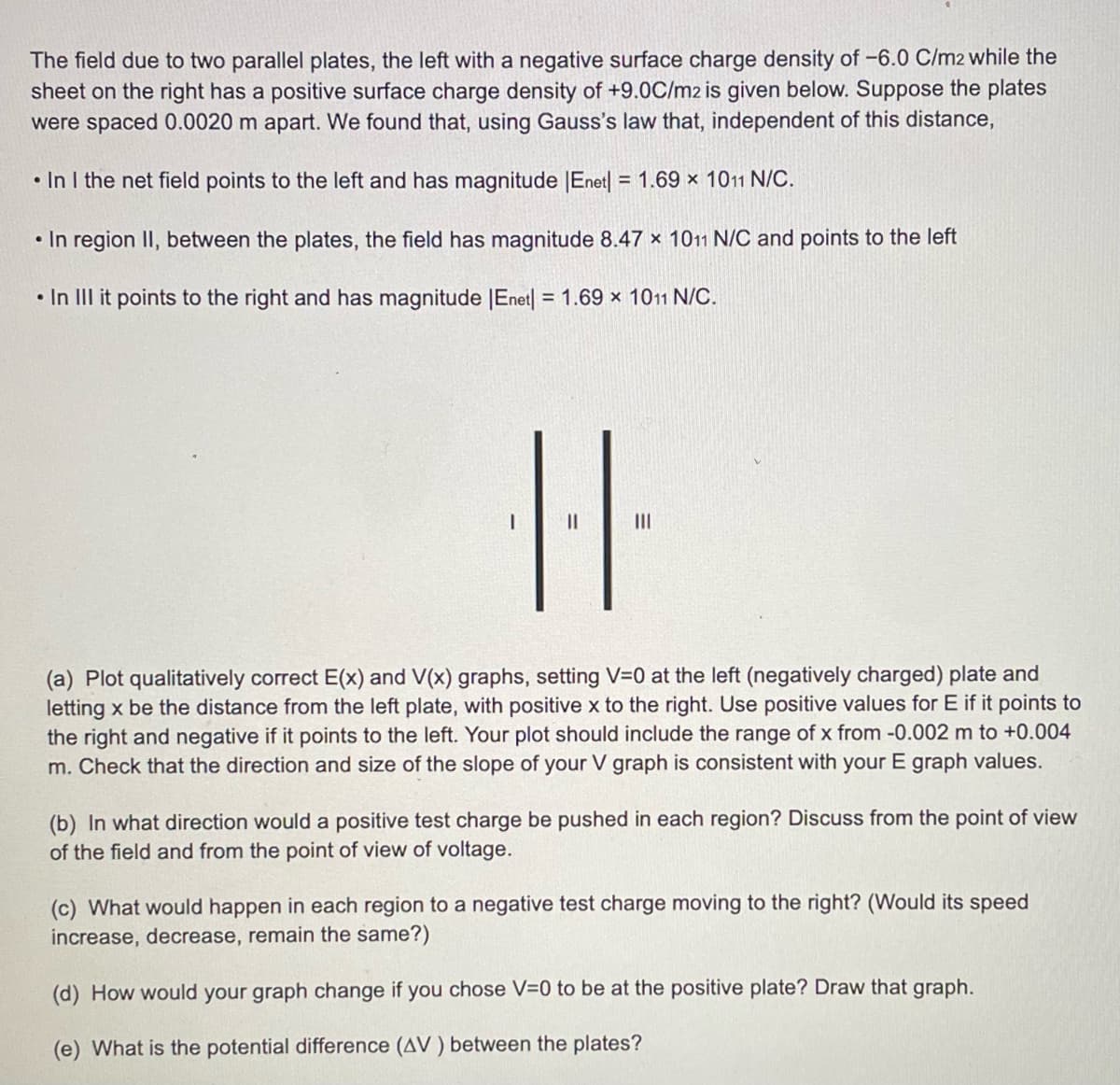The field due to two parallel plates, the left with a negative surface charge density of -6.0 C/m2 while the sheet on the right has a positive surface charge density of +9.0C/m2 is given below. Suppose the plates were spaced 0.0020 m apart. We found that, using Gauss's law that, independent of this distance,
The field due to two parallel plates, the left with a negative surface charge density of -6.0 C/m2 while the sheet on the right has a positive surface charge density of +9.0C/m2 is given below. Suppose the plates were spaced 0.0020 m apart. We found that, using Gauss's law that, independent of this distance,
Chapter6: Gauss's Law
Section: Chapter Questions
Problem 49P: Determine if approximate cylindrical symmetry holds for the following situations. State why or why...
Related questions
Question
d and e

Transcribed Image Text:The field due to two parallel plates, the left with a negative surface charge density of -6.0 C/m2 while the
sheet on the right has a positive surface charge density of +9.0C/m2 is given below. Suppose the plates
were spaced 0.0020 m apart. We found that, using Gauss's law that, independent of this distance,
In I the net field points to the left and has magnitude |Enet| = 1.69 x 1011 N/C.
• In region II, between the plates, the field has magnitude 8.47 x 1011 N/C and points to the left
• In III it points to the right and has magnitude |Enet| = 1.69 x 1011 N/C.
I
1.1
|||
(a) Plot qualitatively correct E(x) and V(x) graphs, setting V=0 at the left (negatively charged) plate and
letting x be the distance from the left plate, with positive x to the right. Use positive values for E if it points to
the right and negative if it points to the left. Your plot should include the range of x from -0.002 m to +0.004
m. Check that the direction and size of the slope of your V graph is consistent with your E graph values.
(b) In what direction would a positive test charge be pushed in each region? Discuss from the point of view
of the field and from the point of view of voltage.
(c) What would happen in each region to a negative test charge moving to the right? (Would its speed
increase, decrease, remain the same?)
(d) How would your graph change if you chose V=0 to be at the positive plate? Draw that graph.
(e) What is the potential difference (AV) between the plates?
Expert Solution
This question has been solved!
Explore an expertly crafted, step-by-step solution for a thorough understanding of key concepts.
Step by step
Solved in 4 steps with 2 images

Knowledge Booster
Learn more about
Need a deep-dive on the concept behind this application? Look no further. Learn more about this topic, physics and related others by exploring similar questions and additional content below.Recommended textbooks for you

